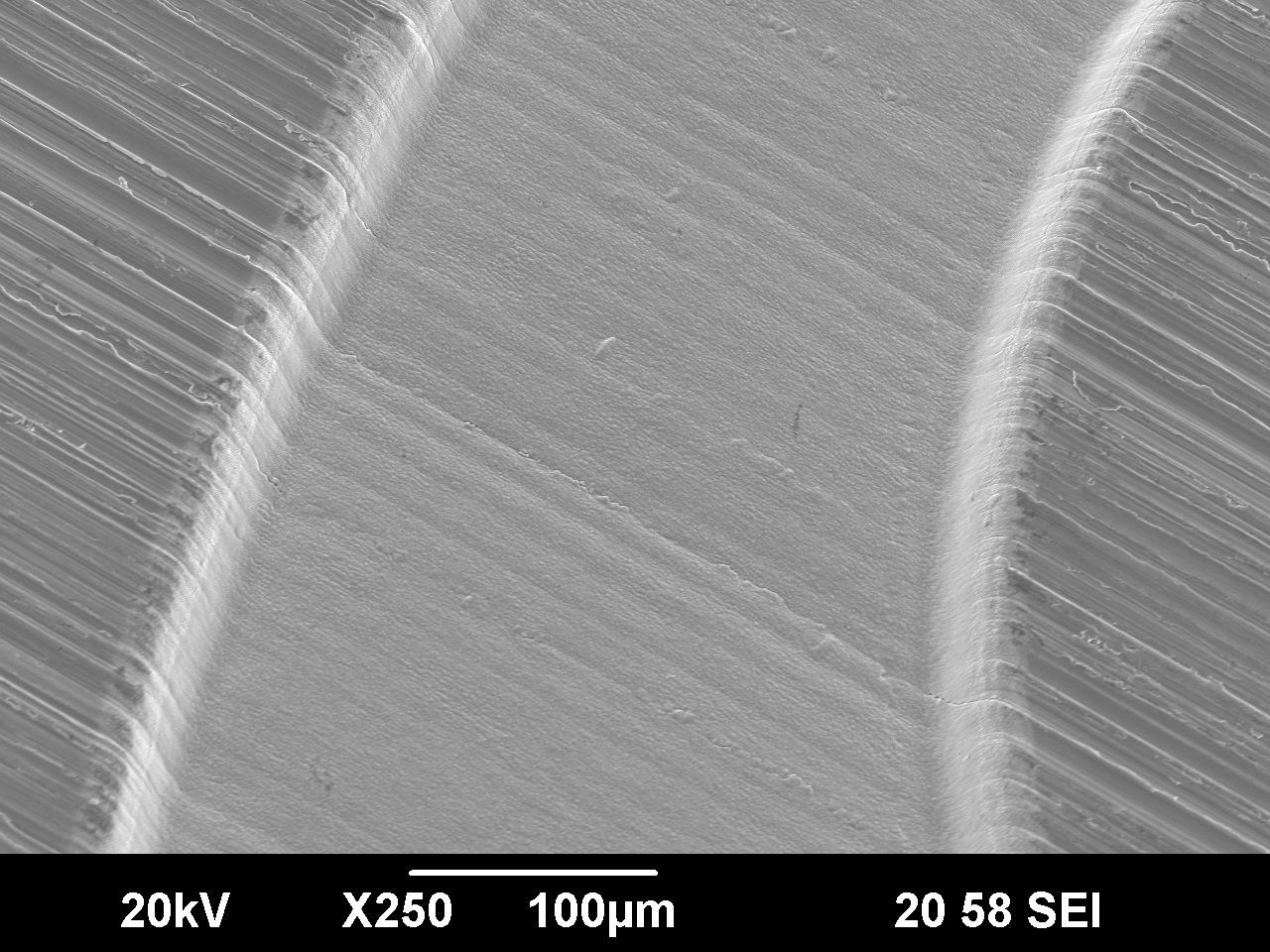Micro engraving of surfaces
Design freedom in geometry and surface quality
Micro engravings open up new possibilities
Due to the good focusability of the ultrashort pulse laser, precise engravings can be produced in any material with great freedom of design in terms of geometry and surface quality. Surface roughnesses of Ra < 1 µm can be realised with the ultrashort pulse laser. The depth of the laser-engraved geometries can be a few 100 nm to several 100 µm. The minimum geometry widths are in the range of a few 10 µm with a tolerance of less than 2 µm.
The advantages of micro engraving with the ultrashort pulse laser are:
Detailed engraving
thanks to the flexibility and good focusability of the tool laser. The achievable accuracies are in the µm range in all three dimensions.
High-quality machining. Thanks to minimal heat input during processing with the ultrashort pulse laser, quality-reducing effects are prevented. For example, the formation of a burr can be avoided.
Low roughness (Ra < 1µm possible) of the laser-engraved surfaces.
High-quality machining. Thanks to minimal heat input during processing with the ultrashort pulse laser, quality-reducing effects are prevented. For example, the formation of a burr can be avoided.
Low roughness (Ra < 1µm possible) of the laser-engraved surfaces.
The technology of micro engraving with the ultra-short pulse laser
Micro engraving with the ultrashort pulse laser is suitable for the production of fine, three-dimensional geometries. Less than 1 µm of material is removed per laser pulse, resulting in a corresponding depth resolution of the engravings that can be produced. Surface roughnesses of Ra < 1 µm
can be achieved with the ultrashort pulse laser. The depth of the laser-engraved geometries can basically be a few 100 nm to several 100 µm. The geometry widths range from a few 10 µm to several 10 mm. The template for engraving is typically dxf files in which the geometries to be created are stored. However, it is also possible to import 3D models in the form of an STL file. In this case, the volume model is converted into a layer model and the material is ablated layer by layer with the ultrashort pulse laser. In this way, a negative mould of the original model is created step by step. Thanks to the cylinder mantle transformation process and if a rotary axis is available, engravings can also be produced on curved surfaces.
In contrast to established manufacturing methods, the machining process is force-free, so that there is no tool wear even with small radii and high aspect ratios. Furthermore, material can be removed independently of the electrical conductivity of the material, so that ceramics and transparent materials can also be engraved in addition to metals. Possible applications include the engraving of design elements on visible surfaces or of stamps, the production of injection moulds for the manufacture of lab-on-a-chip elements as well as the targeted structuring of surfaces to change their tribological properties. In addition to the macroscopic dimensions of an engraving, the properties of the ablated surface can also be defined. Smooth surfaces with roughnesses of 100 nm and less can be produced as well as a defined, regular surface structure in the micrometre range.
The following picture gallery shows various images of an exemplary micro engraving. These images demonstrate the precision that can be achieved with the ultrashort pulse laser. We would be happy to discuss with you whether the ultrashort pulse laser is the right tool for your application in a free initial consultation! If you are interested in micro engraving, we look forward to hearing from you!
In contrast to established manufacturing methods, the machining process is force-free, so that there is no tool wear even with small radii and high aspect ratios. Furthermore, material can be removed independently of the electrical conductivity of the material, so that ceramics and transparent materials can also be engraved in addition to metals. Possible applications include the engraving of design elements on visible surfaces or of stamps, the production of injection moulds for the manufacture of lab-on-a-chip elements as well as the targeted structuring of surfaces to change their tribological properties. In addition to the macroscopic dimensions of an engraving, the properties of the ablated surface can also be defined. Smooth surfaces with roughnesses of 100 nm and less can be produced as well as a defined, regular surface structure in the micrometre range.
The following picture gallery shows various images of an exemplary micro engraving. These images demonstrate the precision that can be achieved with the ultrashort pulse laser. We would be happy to discuss with you whether the ultrashort pulse laser is the right tool for your application in a free initial consultation! If you are interested in micro engraving, we look forward to hearing from you!









